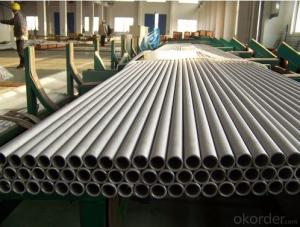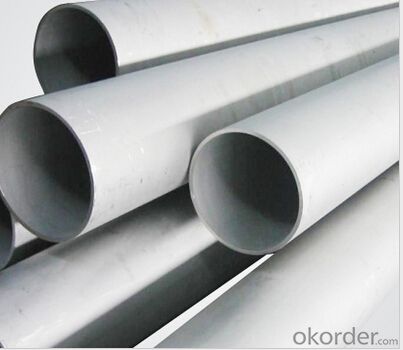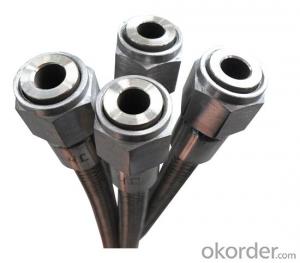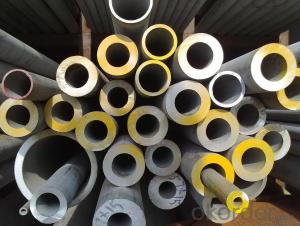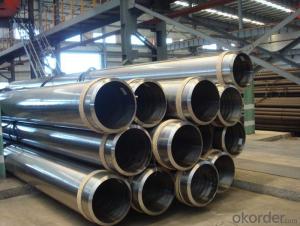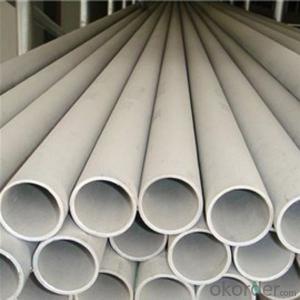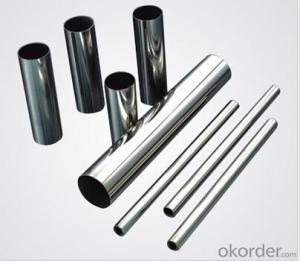Stainless Steel Welded Pipe duplex ASTM A790/ASTM A789 GB/T21832-2008
- Loading Port:
- Ningbo
- Payment Terms:
- TT OR LC
- Min Order Qty:
- 25 m.t.
- Supply Capability:
- 5000 m.t./month
OKorder Service Pledge
OKorder Financial Service
You Might Also Like
1、Structure of Stainless Steel Welded Pipe duplex ASTM A790/ASTM A789 GB/T21832-2008 Description:
Stainless steel welded pipe is actually a cover term, covering a wide range of alloy and making them suitable for different attributes that are used in a very wide and large numbers of different industries. Stainless steel pipe is resistant to erosion, highly flexible, powerful, easy to use, and can be done in distinct approaches, which means that more and more stainless steel was used as a construction material for large-scale, high impact buildings. It can be molded, rolling, and it can create amazing shapes to make it perfect, It is used as experimental buildings, The use of steel pipe welding of large stainless steel covers other examples.
2、Main Features of the Stainless Steel Welded Pipe duplex ASTM A790/ASTM A789 GB/T21832-2008:
• High manufacturing accuracy
• High strength
• Small inertia resistance
• Strong heat dissipation ability
• Good visual effect
•Reasonable price
3、Stainless Steel Welded Pipe duplex ASTM A790/ASTM A789 GB/T21832-2008 Images:
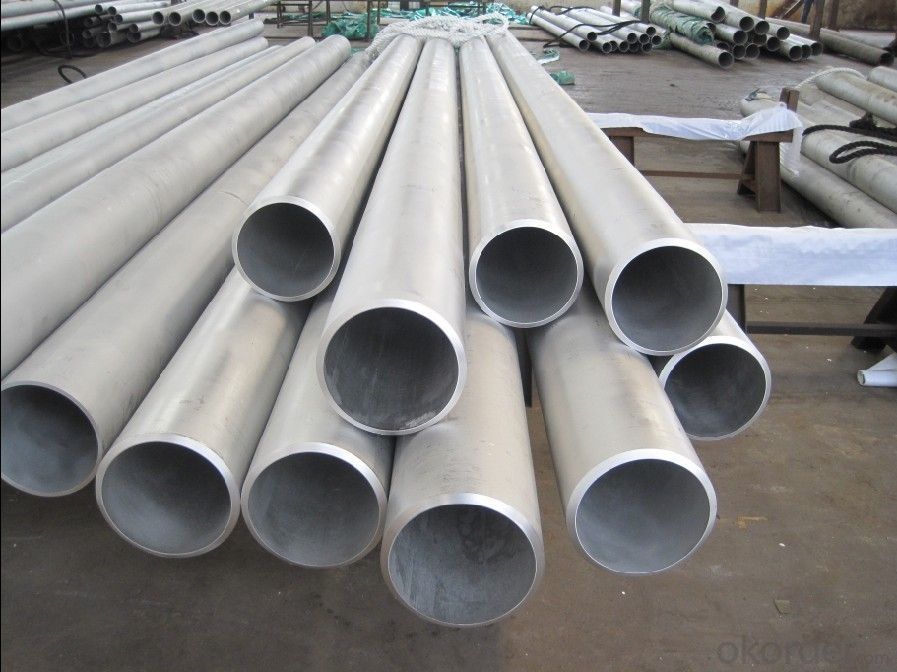
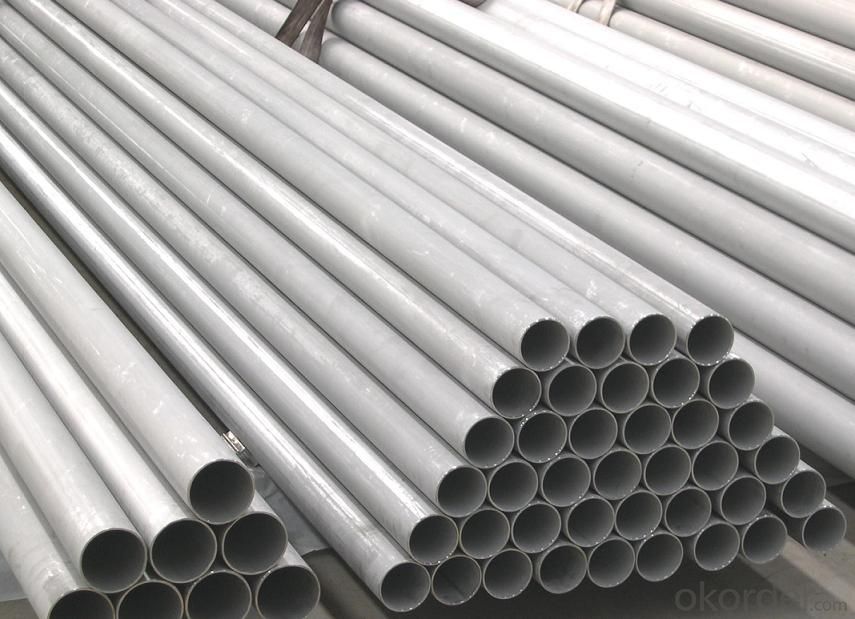

4、Stainless Steel Welded Pipe duplex ASTM A790/ASTM A789 GB/T21832-2008 Specification:
composition of duplex stainless pipe(%)
| Steel grade | C≤ | Mn≤ | Si≤ | S≤ | P≤ | Cr | Ni | Mo | Cu≤ | N |
| S32750((SAF2507) 00Cr22Ni7Mo4N | 0.03 | 1.20 | 0.80 | 0.020 | 0.035 | 24.0/ 26.0 | 6.0/ 8.0 | 3.0/ 5.0 | 0.50 | 0.24/ 0.32 |
| S31803(SAF2205) 00Cr22Ni5Mo3N | 0.03 | 2.00 | 1.0 | 0.02 | 0.030 | 21.0/ 23.0 | 4.50/ 6.50 | 2.50/ 3.50 | 0.08/ 0.20 | |
| S31500(3RE60) 00Cr18Ni5Mo3Si2 | 0.03 | 1.2/ 2.00 | 1. 4/ 2.00 | 0.030 | 0.030 | 18.0/ 19.0 | 4.25/ 5.25 | 2.50/ 2.00 | 0.05/ 0.10 |
Mechanical Properties of duplex pipe:
| Steel Grade | Heat Treatment Temperature ℃ | Ab(MPa)≥ | As(MPa)≥ | ∮≥ | brinell | rockwell |
| S32750(SAF2507) 00Cr22Ni5Mo3N | 1025-1125 water | 800 | 550 | 15 | 310 | 32 |
| S31803(SAF2205) 00Cr22Ni5Mo3N | 1020-1100 | 620 | 450 | 25 | 290 | 30.5 |
| S31500(3RE60) 00Cr18Ni5Mo3Si2 | 980-1040 | 630 | 440 | 30 | 290 | 30.5 |
Details:
Outer Diameter | 6mm--159mm | |||||
Thickness | 0.3mm - 3.0mm | |||||
Length | 6m or as customers' request | |||||
Surface | 180G, 320G, 400G Satin / Hairline 400G, 500G, 600G or 800G Mirror finish | |||||
Application | Decoration construction, upholstery, industry instrument | |||||
Test | Squash test, extended test, water pressure test, crystal rot test, heat treatment, NDT | |||||
5、FAQ of Stainless Steel Welded Pipe duplex ASTM A790/ASTM A789 GB/T21832-2008:
①How is the quality of your products?
Our products are manufactured strictly according to national and internaional standard, and we take a test on every pipe before delivered out. If you want see our quality certifications and all kinds of testing report, please just ask us for it.
Guaranteed: If products’ quality don’t accord to discription as we give or the promise before you place order, we promise 100% refund.
②How about price?
Yes, we are factory and be able to give you lowest price below market one, and we have a policy that “ for saving time and absolutely honest business attitude, we quote as lowest as possible for any customer, and discount can be given according to quantity”,if you like bargain and factory price is not low enough as you think, just don’t waste your time.Please trust the quotation we would give you, it is professional one.
③Why should you chose us?
Chose happens because of quality, then price, We can give you both.Additionally, we can also offer professional products inquiry, products knowledge train(for agents), smooth goods delivery, exellent customer solution proposals.Our service formula: good quality+good price+good service=customer’s trust
SGS test is available, customer inspection before shipping is welcome, third party inspection is no problem.
Any question, pls feel free to contact us !
- Q: How do you join stainless steel pipes to other materials?
- One common method to join stainless steel pipes to other materials is by using welding techniques such as TIG (tungsten inert gas) or MIG (metal inert gas) welding. These welding methods create a strong and durable bond between the stainless steel pipes and the desired material. Additionally, other methods like threaded connections, compression fittings, or flanges can also be used depending on the specific application and requirements.
- Q: Can stainless steel pipes be used for seawater applications?
- Yes, stainless steel pipes can be used for seawater applications. Stainless steel is highly resistant to corrosion and can withstand the harsh conditions of seawater, making it an ideal material for pipes used in marine environments. The chromium content in stainless steel forms a protective oxide layer on the surface of the pipes, preventing corrosion and ensuring durability. Additionally, stainless steel pipes have good strength and can handle high-pressure situations, making them suitable for various seawater applications such as desalination plants, offshore oil rigs, and shipbuilding.
- Q: Are stainless steel pipes suitable for chemical processing?
- Indeed, stainless steel pipes are well-suited for chemical processing purposes. Renowned for their exceptional resistance to corrosion, stainless steel pipes prove to be an optimal choice when it comes to managing a wide range of chemicals in various processing industries. These pipes exhibit resistance not only towards organic and inorganic chemicals, but also acids, alkalis, and solvents. Consequently, they can endure high temperatures and pressures, thus demonstrating their aptitude for handling aggressive chemicals and upholding process integrity. Moreover, stainless steel boasts hygienic attributes, as it is impermeable and effortless to clean, thereby ensuring the purity of the chemicals undergoing processing. Furthermore, stainless steel pipes possess an extended lifespan and necessitate minimal maintenance, thus presenting a cost-effective solution for chemical processing applications.
- Q: Are stainless steel pipes resistant to erosion-corrosion?
- Yes, stainless steel pipes are highly resistant to erosion-corrosion due to their inherent properties such as high chromium content, which forms a protective oxide layer on the surface, preventing corrosion and erosion from occurring.
- Q: What is the difference between stainless steel pipes and PVC pipes?
- Stainless steel pipes are made from a durable and corrosion-resistant material, while PVC pipes are made from a lightweight and cost-effective plastic. Stainless steel pipes are suitable for high-pressure and high-temperature applications, while PVC pipes are commonly used for water supply and drainage systems. Additionally, stainless steel pipes have a longer lifespan and can withstand harsh environmental conditions, whereas PVC pipes may degrade over time and are more prone to cracking or breaking.
- Q: Can stainless steel pipes be used for paper and pulp industry applications?
- Stainless steel pipes are highly suitable for applications in the paper and pulp industry. This industry prefers stainless steel due to its exceptional resistance to corrosion, durability, and strength. Given the challenges posed by corrosive chemicals, high temperatures, and abrasive materials, stainless steel pipes are an optimal choice for a wide range of uses. These pipes are used to transport chemicals, steam, and water, as well as to convey pulp and paper products. Additionally, stainless steel pipes are hygienic, easy to clean, and do not cause contamination of the conveyed products. In summary, stainless steel pipes exhibit exceptional performance and durability in the demanding conditions of the paper and pulp industry.
- Q: Can stainless steel pipes be used for hydrogen fuel cell systems?
- Yes, stainless steel pipes can be used for hydrogen fuel cell systems. Stainless steel is known for its excellent corrosion resistance, which makes it suitable for handling hydrogen gas. Hydrogen fuel cell systems involve the transportation and storage of hydrogen gas, and stainless steel pipes provide a reliable and durable solution for this purpose. Additionally, stainless steel pipes can withstand high pressure, making them ideal for transporting hydrogen gas safely. Overall, stainless steel pipes are commonly used in hydrogen fuel cell systems due to their corrosion resistance, strength, and ability to handle high-pressure environments.
- Q: What is the maximum temperature stainless steel pipes can withstand?
- The maximum temperature stainless steel pipes can withstand varies depending on the grade of stainless steel used. However, most stainless steel pipes can withstand temperatures up to around 1200°C (2200°F) without losing their structural integrity.
- Q: Can stainless steel pipes be cold worked?
- Indeed, cold working is a viable option for stainless steel pipes. By subjecting the metal to deformation at normal temperatures, without any heating prerequisites, the desired outcomes can be achieved. Given the malleable and adaptable nature of stainless steel, shaping and sizing through cold working can be effortlessly accomplished. Techniques like bending, flaring, swaging, and drawing can be effectively employed to meet precise specifications when it comes to stainless steel pipes. Moreover, cold working not only augments the steel's robustness and rigidity but also renders it suitable for diverse applications in sectors such as construction, automotive, and manufacturing.
- Q: 304 stainless steel seamless tube weight how to calculate?
- The common marking methods in the market are 00Cr19Ni10, SUS304, in which 00Cr19Ni10 is generally used to indicate standard production of the national standard. Generally speaking, ASTM standard production is indicated, and SUS 304 represents standard production.
Send your message to us
Stainless Steel Welded Pipe duplex ASTM A790/ASTM A789 GB/T21832-2008
- Loading Port:
- Ningbo
- Payment Terms:
- TT OR LC
- Min Order Qty:
- 25 m.t.
- Supply Capability:
- 5000 m.t./month
OKorder Service Pledge
OKorder Financial Service
Similar products
Hot products
Hot Searches
Related keywords


